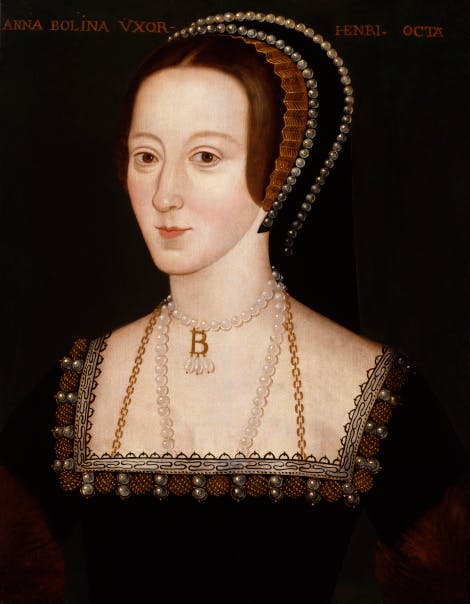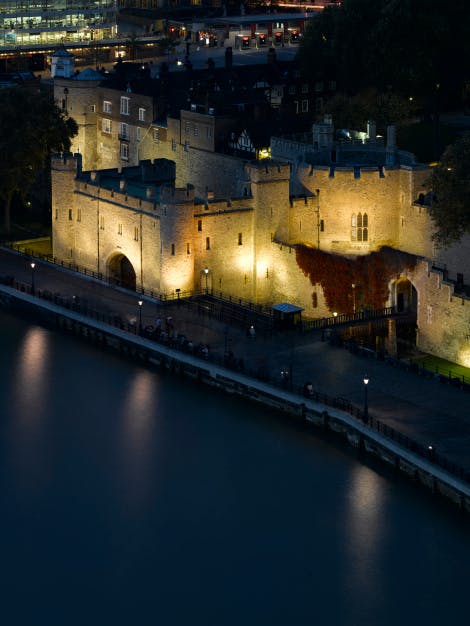The Chapel Royal of St Peter ad Vincula has stood as the parish church of the Tower of London
for over 500 years. As a final resting place for many who lived or were imprisoned within the
Tower’s walls - including three Queens and two Catholic Saints - it undoubtedly has a few
stories to tell, but much of its earlier history remains unknown. Now, finds from the most
significant excavation at the Tower in a generation are beginning to shed light on both the
development of its chapel, and some of the people connected with it.
This year, Historic Royal Palaces, the independent charity that cares for the Tower of London
- which is protected as a scheduled monument - has undertaken a major excavation to prepare
the Chapel for the installation of a new lift, as part of its commitment to make the site more
accessible for visitors. Work on the project began over six years ago, when a trial pit unearthed
two skeletons buried outside the Chapel, which have since become the first to undergo modern
scientific analysis - undertaken in partnership with Cardiff University and Historic England.
The analysis of these individuals, who are likely to have been members of the Tower
community who died in the early sixteenth century, provides for the first time a rare glimpse
into the personal lives of the Tower community in this tumultuous period.
This Spring, the first major excavation ever to be undertaken outside the Chapel - and the first
in the Tower for over 30 years - has been taking place, revealing more of the fortress’s secrets.
This new excavation, conducted by Pre-Construct Archaeology and led by the Historic Royal
Palaces curators - with advice and consent from Historic England - has uncovered the remains
of more than 20 individuals, along with some tantalising hints of the Chapel’s earlier history,
making it the most significant dig at the Tower for a generation.
Amongst the many important finds is a 14th century collection of burials, which may be a mass
grave, possibly related to the ‘Black Death’. Three skeletons from the late 12th or early 13th
century, have also been uncovered. These people appear to have been buried in coffins, which
is unusual for the period and may indicate high-status burials. Alongside this were several
significant small finds, including a fragment of a burial shroud, a rare discovery given that
textiles do not usually survive in this context. A separate burial also contained two 12th to early
13th century pots containing charcoal, which are exceptionally rare examples of medieval grave
goods only found once before in England. These finds will now be subject to further scientific
analysis to enhance our understanding of these individuals, their deaths and their burials.
Excitingly, the dig has also revealed intriguing evidence of the Chapel’s architectural
history. The current Chapel was built in 1519-20 after a fire burnt down a previous iteration
(built by King Edward I in 1286-7) in 1512. Evidence of a large-scale burning event has been
discovered, along with the foundations of that now lost building. In addition to this, a
compacted layer of Reigate stone discovered during the excavation could date to even earlier
and potentially be related to works undertaken by Henry III in 1240. Separately, a large section
of wall and possible floor surface the dig has uncovered may even be part of Henry I’s 12th
century chapel, about which very little is known.
This is the first major archaeological dig in this part of the Tower of London and therefore
offers an exciting opportunity to revolutionise our understanding of the building and those
that stood before it – re-drawing the map of the medieval fortress. Further assessments and
analysis on all the finds will be carried out in the coming years, with the hope of uncovering
even more insight into the Tower’s long history.
Alfred Hawkins, Curator of Historic Buildings at Historic Royal Palaces, said
“Undertaking these two excavations has provided us with a generational opportunity to
enhance our understanding of the evolution of the Chapel of Saint Peter ad Vincula, and the
buildings which stood before it. Alongside this, through undertaking a rigorous scientific
assessment of the remains encountered in 2019, we have been able to start to build up a more
detailed picture of the individual lives of the people who lived, died, and worshiped within the
chapel, which will only be enhanced through the results of the current, larger excavation.
These excavations were essential as part of our mission to provide greater access for people to
visit this important place of worship, but they have also given us an amazing opportunity to
explore the site in more depth than ever before, and I’m looking forward to starting analysis
on some of the other amazing finds we have uncovered along the way.”
Dr Katie Faillace, based at Cardiff University’s School of History, Archaeology and
Religion, said: “The new excavations provide the opportunity to transform our understanding
of the Tower’s community. Our work uses a biomolecular technique known as isotope analysis,
which tells us about health, diet and mobility in the past, all from a tiny fragment of a tooth.
This cutting-edge method has unparalleled potential for reconstructing the experiences of the
people who lived and died at the Tower, allowing us to build a rich picture of individuals’ lives.”
Dr Jane Sidell, Principal Inspector of Ancient Monuments at Historic England, said:“Together we've struck a balance between creating lift access to a fascinating part of the Tower
of London, with the complexity of carefully managing a hugely significant and archaeologically
rich site. We're already gaining insight into the residents of the Tower in a way we have never
been able to do before. But this is just the tip of the iceberg - there is so much more to learn
through further analysis about the people as well as the buildings of one of England’s most
evocative historic monuments."
Notes to Editors
For further information and images please contact the Historic Royal Palaces Press Office via press@hrp.org.uk / 020 3166 6166
Historic Royal Palaces is the independent charity that loves and looks after six of the most
wonderful palaces in the world. The palaces are the setting for the stories that shape us all, and
we’re bringing them to people in ways that mean more to them. We want everyone to find
themselves in the spaces and stories we share.
Registered charity number 1068852. For more information visit www.hrp.org.uk
Cardiff University is recognised in independent government assessments as one of
Britain’s leading teaching and research universities and is a member of the Russell Group,
the UK’s most research-intensive universities. The 2021 Research Excellence Framework
found 90% of the University’s research to be world-leading or internationally excellent.
Among its academic staff are two Nobel Laureates, including the winner of the 2007 Nobel
Prize for Medicine, Professor Sir Martin Evans. Founded by Royal Charter in 1883, today the
University combines impressive modern facilities and a dynamic approach to teaching and
research. The University’s breadth of expertise encompasses: the College of Arts, Humanities
and Social Sciences; the College of Biomedical and Life Sciences; and the College of Physical
Sciences and Engineering. Its University institutes bring together academics from a range of
disciplines to tackle some of the challenges facing society, the economy, and the
environment. More at www.cardiff.ac.uk
The excavations were planned in partnership with Historic England.
Scheduled Monument Clearance, a process administered by Historic England on behalf of
the Secretary of State for Culture, Media and Sport, was granted for this work.
Historic England
We are Historic England, the public body that protects and brings life to the heritage
that matters to us all, so it lives on and is loved for longer. From the extraordinary to
the everyday, our historic places and spaces matter. From community centres to
cathedrals, homes to high streets, markets to mills – there are special places we all
choose to hold onto, the legacy we want to pass on and the stories we continue to
tell. That’s why we work together with people across England to discover, protect
and bring new life to our shared historic environment, providing advice, knowledge,
support and services. Follow us on social media @HistoricEngland.
Historic England and planning
Central to our role is the advice we give to local planning authorities, government
departments, developers and owners on development proposals affecting the
historic environment. In our planning role, we were consulted on more than 12,000
applications in 2024-25, over 99% of which we responded to within the 21-day
response target. Of these, we formally objected to just 1%.
For more information about our planning services,
visit: https://historicengland.org.uk/services-skills/our-planning-services
The 2019 analysis was supported by the London and Middlesex Archaeological Society
(LAMAS) Research Grant. London and Middlesex Archaeological Society (LAMAS)
is a charity formed in 1855 to investigate the antiquities and early history of the Cities of
London and Westminster and the historic county of Middlesex. It does this by promoting
research into London's history, archaeology and historic buildings and supporting the
publication of the results of such research through its journal Transactions, lectures and
conferences.
Registered charity no. 267552. For more information visit https://www.lamas.org.uk
Explore what's on

- Families
- Events
- Half term
Beano Mischief at the Tower of London
Join Dennis and his Beano pals this February half term as they crash their time machine into the fortress. Can you help them get back home?
-
14 - 22 February 2026
- Tower of London
- Included in palace admission. (Members go free, no pre-booking required)

- Things to see
Battlements
Walk the defensive walls and huge towers that have guarded the Tower of London for centuries.
- Open
- Tower of London
- Included in palace admission (Members go free)

- For members
- Events
Members-only Ceremony of the Keys
Members-only access to the traditional locking up of the Tower of London, the Ceremony of the Keys.
-
18 January, 08 February, 22 March 2026
- 21:30
- Tower of London
- Separate ticket (advance booking required)
Browse more history and stories

Duleep Singh
The last Sikh Maharaja of the Punjab and former owner of the Koh-i-Noor diamond

Anne Boleyn
How did Anne Boleyn become queen and why did Henry VIII execute her?

The story of the Tower of London
Iconic fortress, royal palace and infamous prison.
Shop online

Shop Hanging Decorations
Browse through our beautiful range of hanging decorations, ornaments and baubles including unique and hand-made pieces.
From £5.50

Tower of London Navy Raven Sweatshirt
Inspired by the infamous ravens of the Tower of London, this sweatshirt will keep you warm on those chilly days.
£38.00

Shop Six Wives of Henry VIII
'Divorced, Beheaded, Died: Divorced, Beheaded, Survived' - this best selling range is as colourful as it is informative.
From £15
